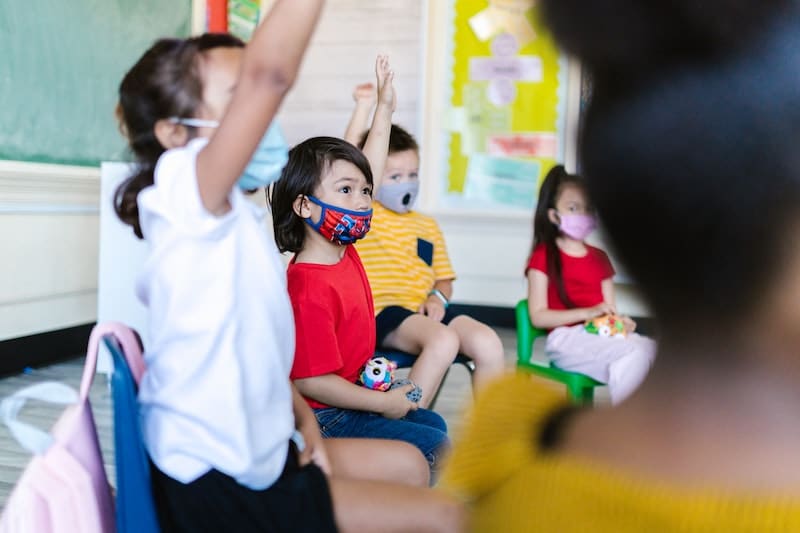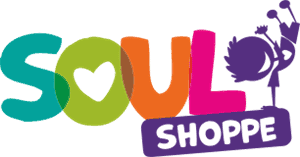In a recent blog, we talked about using trauma-informed teaching strategies to foster a safe learning environment for all students. The unfortunate fact is that some children have past or current trauma that they’re dealing with. (USDVA) Since it’s not always possible to know which students have a traumatic experience in their backgrounds, especially when they are new to a class, educators just have to assume that they will have some students dealing with trauma in their classes. (CDC)
It might not always be possible to prepare for individual cases of trauma, but it is possible to incorporate trauma-informed activities for students into a lesson plan. Trauma-informed lesson plans help students recognize their classrooms as safe places to learn and ask questions. Educators are a large part of a child’s developmental process. With a deft understanding of the realities of recovering from trauma, a teacher can be part of a child’s healing process. (GSE)
Take a look at this overview of a few trauma-informed activities for students.
Trauma-Informed Activities for Students
Trauma-Informed Icebreakers
For a lot of kids, trauma has the most pronounced effect on their ability to integrate socially. (SDLab)
Trauma-informed icebreakers have a twofold positive impact on the lives of students.
Firstly, effective trauma-informed icebreakers provide a more comfortable way for students to be welcomed into a classroom.
Secondly, in the long run, using trauma-informed icebreakers will provide children with tools to carry into their later lives. Children with trauma in their backgrounds will be prepared with effective icebreakers to use in future social interactions. Additionally, children without trauma in their backgrounds will be better prepared for interactions with people coping with traumatic experiences in the future.
There’s been a lot of ink spilled on the subject of icebreakers and there are many resources available to help design them. (IQA) However, ensuring icebreakers are trauma-informed requires one more layer of review.
Approach creating icebreakers with these five things in mind:
- Encourage positive relationships.
- Create a safe and welcoming physical space.
- Use positive priming, i.e., set the tone.
- Identify and encourage character strengths.
- Encourage resilience with affirmative language tactics–I can do this, I am capable of this, etc.
Creating trauma-informed icebreakers with these things in mind will help prepare children for new social experiences.
A great example of this is Beach Ball Bonding. (SCS) This is where you toss the beach ball around the room and the person who catches it shares something about themselves. For younger children, prompts can be as simple as “What’s your favorite candy?” For older students, you might ask social-emotional questions like, “What do you do to calm yourself when you’re upset?” Or, “Tell us about something you’d like to see improved in the school.”
Circles: Compliment, Affirmation Language, and Community

Mediated conversations where all students get to participate in a subject with positive intent help to create a safe sense of belonging among all students. Particularly students with trauma in their backgrounds who may find it difficult to feel at ease in a group setting.
In the pursuit of creating a safe and nurturing environment for all students, but particularly for those students with traumatic experiences in their backgrounds, it might prove valuable to incorporate classroom conversations. (KickBoard) Some examples include:
- Compliment circles. Everyone in class gets a chance to pay a compliment to everyone else in the class.
- Affirmation language circles. Everyone gets a chance to say something affirming or encouraging about everyone in the class, for example, that they are capable of overcoming something challenging.
- Community circles. Everyone in class gets a chance to exchange something that builds community, for example finding things they have in common that they might not have known they shared.
Conversations like this can go a long way toward making all students feel like the classroom is a safe and inclusive place.
Journaling
Sometimes writing down thoughts feels less intimidating than talking about them out loud. When children have intense emotions, such as those related to trauma, sometimes ensuring they have quiet time to journal helps with self-soothing.
Reading
In many cases, books can create opportunities for children to think about difficult subjects in a safer way than other activities. Books can lay out the realities of a tough emotional state in a way that makes it possible to consider that state and its repercussions constructively.
There are a lot of trauma-informed reading materials out there, including teaching resources and books appropriate for students to read. (Lee&Low) Incorporating titles from a trauma-informed reading list into school curricula creates a tool for dialogue. Children might not always know what questions to ask, or they might not know how to describe the context of their questions. However, books can inspire questions, sometimes unexpected ones. They also create a context for a focused and productive conversation.
Other Trauma-Informed Tools

Students can inform educators about how they are feeling and what they need each day with a feelings and needs poster. They simply refer to the poster by writing down one of their feelings and needs at the beginning of the day. Younger students can tap the poster to show the teacher, instead of writing it down. Order the feelings poster here.
Additionally, it’s helpful to have a corner where students can go when they are feeling overwhelmed or just need time away. A peace corner is a place where students can empty their emotional balloons. Click here to find out how to build a peace corner.
Safe, Positive, and Encouraging Lesson Plans
Creating trauma-informed activities for students should include encouraging positive relationships and developing a safe environment. Teachers can set the tone in their classrooms by identifying strengths and by encouraging resilience through positive language–you can do it!
At Soul Shoppe we provide social emotional learning programs. Click for information about SEL Programs for Elementary Schools.
You May Also Like:
Trauma-Informed Teaching Strategies


